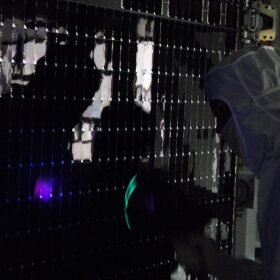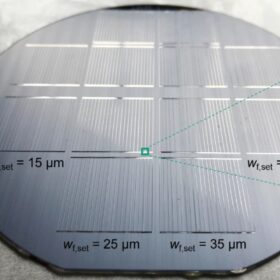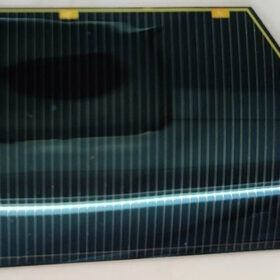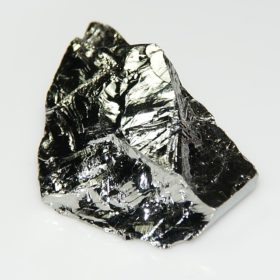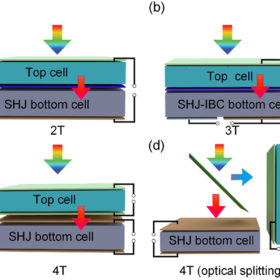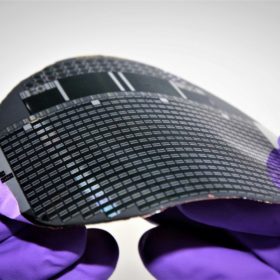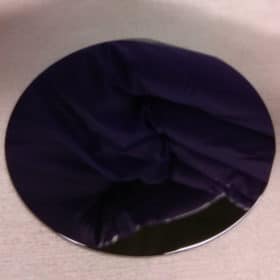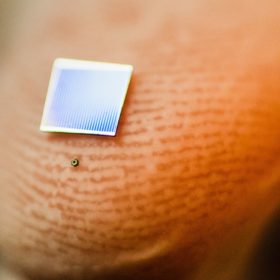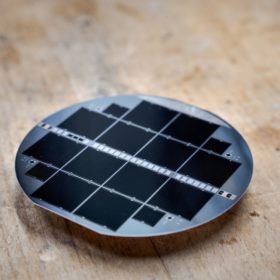The impact of temperature on III-V solar cells
Scientists in Spain have analyzed the impact of temperature and spectral conditions on III-V solar cells employed in concentrator photovoltaic modules. They claim to have assessed the cell behavior under unprecedented operating condition.
III–V triple-junction solar cell with mask, plate front metallization achieves 31.6 % efficiency
Fraunhofer ISE researchers utilized a new front metallization technique to produce a III-V gallium arsenide solar cell. For mask and plate front metallization, they used a new two-step printing scheme that reportedly allows for the realization of extremely narrow mask openings.
Five-junction III-V solar cell with 35.1% efficiency
Chinese researchers have used metal-organic chemical vapor deposition (MOCVD) to produce a 12 cm2, five-junction solar cell with a minimal number of mismatch dislocations. The cell has an open-circuit voltage of 4.727 V, a short-circuit current density of 860 mA/m2, and a fill factor of 86.38%.
III–V solar cell based on spalled germanium substrate achieves 23.36% efficiency
US scientists used spalled germanium instead of gallium arsenide, as the former reportedly reduces several issues associated with GaAs spalling. The cell achieved an open-circuit voltage of 1.019 V, a short-circuit current density of 28.49 mA cm−2, and a fill factor of 80.45%.
An overview of heterojunction solar cell technologies
Scientists at the Nankai University in China have provided a comprehensive overview of current research on silicon heterojunction-based tandem solar cells (SHJ-TSCs) and shared their expectations of future developments in this field.
Fraunhofer ISE unveils 68.9%-efficient III-V solar cell for laser energy transmission systems
The German research institute said the gallium arsenide cell has achieved the highest efficiency to date for the conversion of light into electricity.
Four-terminal III-V solar cell with 32.57% efficiency
Scientists at the US National Renewable Energy Laboratory have simulated a III-V solar cell by stacking gallium arsenide films onto interdigitated back contact silicon solar cells with a glass interlayer. The scientists have already done some initial mini-module integration work, but significant size scaling will ultimately be needed to reach commercialization. The cell currently has an active area of 1 cm2.
Micro III-V solar cell with 33.8% efficiency
Developed by a French-Canadian research group, the triple-junction cell is based on indium gallium phosphide (InGaP), indium gallium arsenide (InGaAs) and germanium (Ge) and has an active area of only 0.089 mm2. It can be used for applications in micro-concentrator photovoltaics (CPV).
Gallium arsenide phosphide tandem solar cell with 25.0% efficiency
The demonstrated device, according to the academics, is built with interfaces between the active cell layers that improve the top cell carrier collection. The cell was built with texturing and a hydrogenated amorphous silicon (a-Si:H) passivation of a silicon back surface.
Fraunhofer ISE claims 25.9% efficiency for III-V tandem solar cell
The new results mark an improvement on the institute’s previous 24.3% efficiency record. The III-V tandem solar cell is directly grown on silicon.
